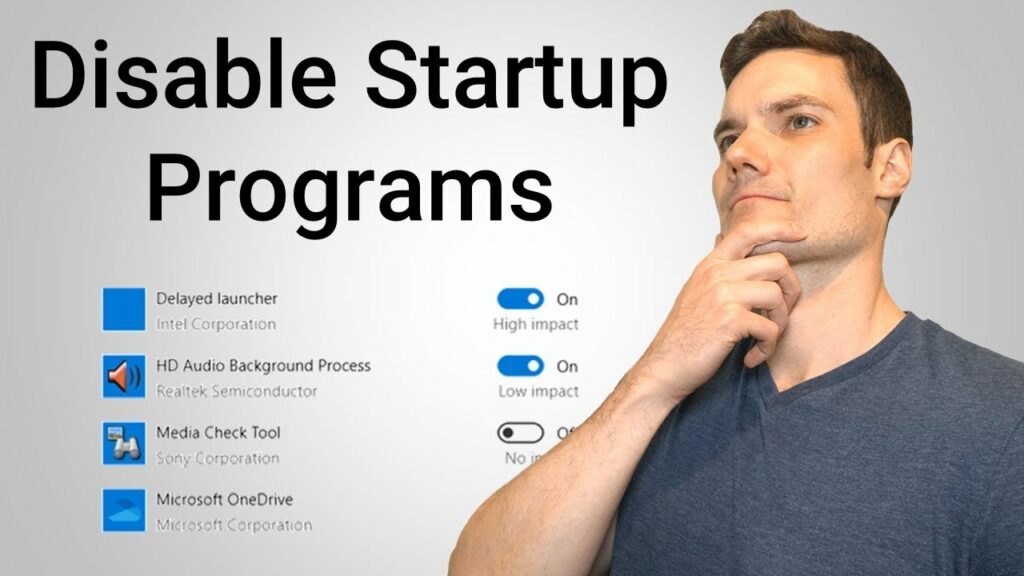How to disable startup programs

Introduction to Disabling Startup Programs
When you start your computer, certain programs and applications may launch automatically, which can slow down the boot process and consume system resources. Disabling startup programs allows you to choose which applications start automatically when you log into Windows, helping to improve startup speed and optimize system performance. This guide covers how to disable startup programs in Windows 10 using built-in tools and third-party software, offering methods suitable for different user preferences and needs.
Methods to Disable Startup Programs in Windows 10
Method 1: Using Task Manager
- Open Task Manager:
- Right-click on the taskbar (the bar at the bottom of the screen) and select “Task Manager” from the context menu. Alternatively, press
Ctrl + Shift + Escon your keyboard to open Task Manager directly.
- Right-click on the taskbar (the bar at the bottom of the screen) and select “Task Manager” from the context menu. Alternatively, press
- Navigate to Startup Tab:
- In Task Manager, click on the “Startup” tab at the top of the window. This tab displays a list of programs that launch automatically when you start Windows.
- Disable Startup Programs:
- Right-click on the program you want to disable from starting automatically and select “Disable.” Repeat this step for each program you want to prevent from launching at startup.
- Close Task Manager:
- Once you’ve disabled the desired startup programs, you can close Task Manager.
Method 2: Using Settings
- Open Settings:
- Click on the Start button (Windows icon) in the bottom-left corner of the screen and select “Settings” (gear icon).
- Go to Apps Settings:
- In the Settings window, click on “Apps.”
- Navigate to Startup Apps:
- In the left-hand menu, click on “Startup.” This displays a list of applications that are configured to start automatically when you sign in to Windows.
- Toggle Off Startup Apps:
- To disable a startup app, toggle the switch next to its name to the “Off” position. This prevents the app from launching automatically at startup.
Additional Tips and Considerations
- Identifying Unnecessary Startup Programs:
- Review the list of startup programs carefully and disable those that you do not use frequently or do not need to start automatically.
- Impact on System Performance:
- Disabling startup programs can improve boot time and system performance, especially on older or less powerful computers.
- Managing Startup Impact:
- Task Manager in Windows 10 provides a “Startup impact” column, which indicates how much a program impacts startup time. Consider disabling high-impact programs first for maximum performance gains.
- Third-Party Tools:
- There are third-party applications available that can help manage startup programs more comprehensively, offering additional features such as delay options or advanced startup management.
Conclusion
Disabling startup programs in Windows 10 is a practical way to optimize system performance and streamline the boot process by preventing unnecessary applications from launching automatically. By following the step-by-step instructions provided in this guide using Task Manager or Settings, you can effectively customize your startup experience to suit your computing needs and preferences.
Experiment with different methods and tools to identify and disable startup programs that are not essential for your daily use, thereby improving overall system responsiveness and efficiency. Regularly review and manage startup programs to maintain optimal performance and enhance your Windows 10 experience.




